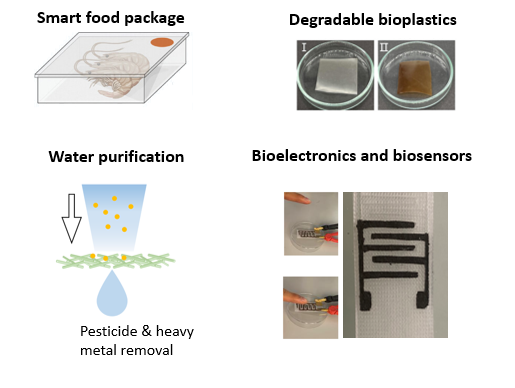The Zhou lab
for Food Materials and Nanotechnology
Our Research

Developing nature-derived food nanostructures is one promising strategy to rationally design food structures for improving food functionalities and enhancing nutritional values.
Food protein nanofibril, produced from edible food proteins from foods, such as milk β-lactoglobulin, egg white lysozyme, oat globulin and soy whey protein, has recently emerged as a promising strategy for enriching protein functionality and developing sustainable materials. Nanofibrils are the linearly aligned proteins after treatment. This nanostructure in the diameter of a few nm are formed through the beta-sheet formation in fibril core. Typically, this food-grade protein nanofibril possesses excellent intrinsic properties including high surface-to-volume ratio, rich surface chemistry, outstanding mechanical strength, biocompatibility and biodegradability.
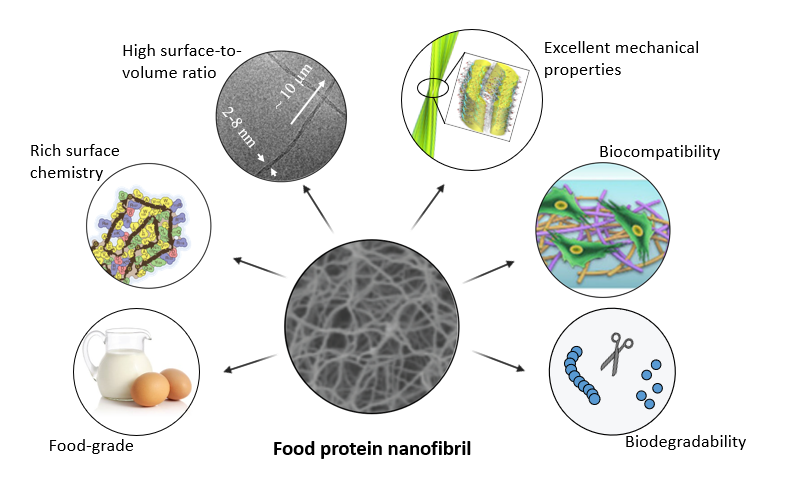

Our previous research primarily focuses on the following areas:
We explored sustainable plant proteins, including cereal proteins such as oat and rice; legumes proteins such as cow pea and chickpea; oil-seed proteins such as hemp and pumpkin seeds.
We investigated fundamental mechanisms of protein-protein interactions and their self-assembling into nanofibrils, including evaluation of morphological and mechanical properties, intertwining, polymorphism and reversibility. These insights consolidate the rational design of food structures with enhanced techno-functionalities, novel nutrition delivery systems, and the development of biomedical and functional materials.
We extended the our fundamental understandings to develop materials across multiple disciplines: 1) Functional food: Our nanofibrils demonstrated the improvement of food techno-functionalities with its further validation of its safety. 2) Human nutrition: Our nanofibrils are promising scaffolds to deliver nutrition, drugs and bioactives, either as nanocarrier or through encapsulation. 3) Biomedical hydrogels: our nanofibrils can be developed into highly compatible biomedical hydrogel for wound healing and tissue/bone regeneration. 4) Functional materials: these nanofibril with rich chemical properties can be easily incorporated into hybrid materials with applications spanning environmental science, bioelectronics and material science.
Current Research Interests
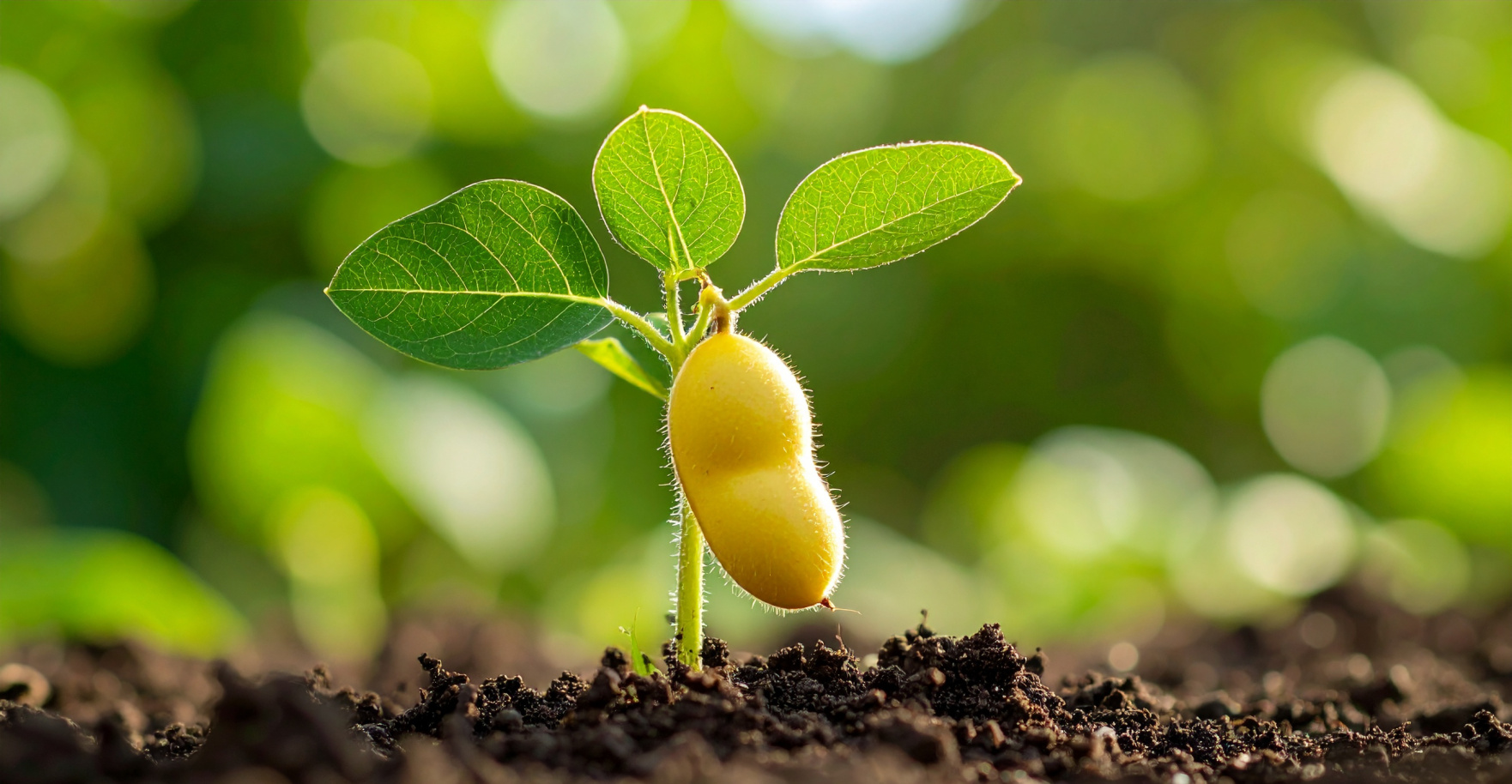
Sustainable Proteins
We seek sustainable proteins from plants, sea food, novel high-protein sources, industry by-products and food waste to replace the traditional milk and egg protein for high-quality, affordable and sustainable protein nanofibrils and other protein nanostructures. These efforts are expected to advanced building block of protein nanostructures and hybrids for the scaled-up applications in food science and human nutrition.
Fundamental & Novel Mechanisms
We explore the fundamental principles of protein self-assembling process, the intrinsic properties of protein nanofibril, their interactions with macromolecules and nutrients at nanoscale. This understanding could help us to better appreciate the novel mechanism including protein-nutrients interaction and stimuli-regulated fibril dissembling. These understanding at nanoscale and microscale can be possible applied to design the materials for the applications, such as nano-carrying nutrients, promoting the absorption, and provide human health.
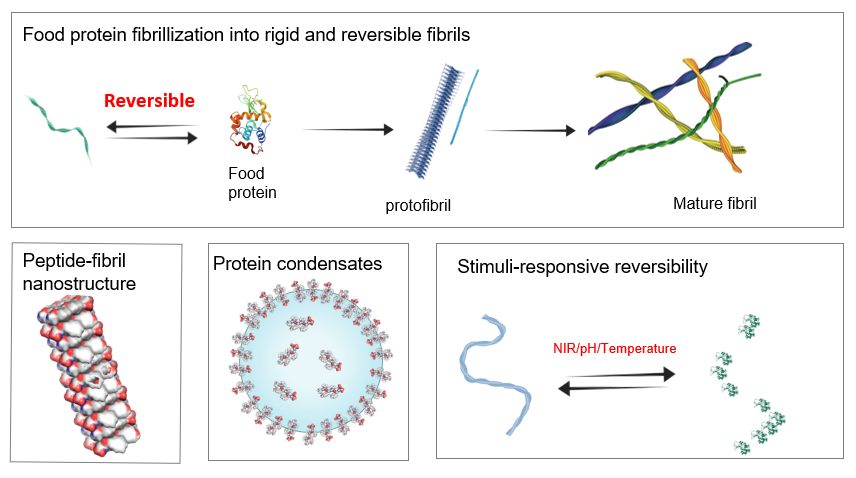

Plant meat & Cultivated meat
We use the sustainable and novel protein to design compatible, food-grade and strong hydrogel as scaffold for cultivating meat.
We also try to design the nanoscale-microscale-macroscale structure with high mechanical property for high-textured plant meat.
Food fortification and oral nutrition delivery
How to make the food healthier? Food fortification is one effective strategy to provide micronutrients, such as vitamins and minerals, to improve food nutritional quality and thus contributes to the prevention and reduction of micronutrient deficiency-related diseases.
We found that our food protein nanofibril system exhibits the superior advantages to carry, stabilize, delivery the multiple micronutrients with high loading capacity and minimized aggregation. Remarkably, it also further promotes the human absorption efficiency of these valuable molecules.
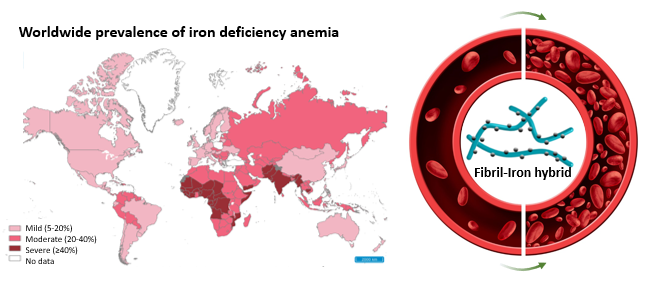
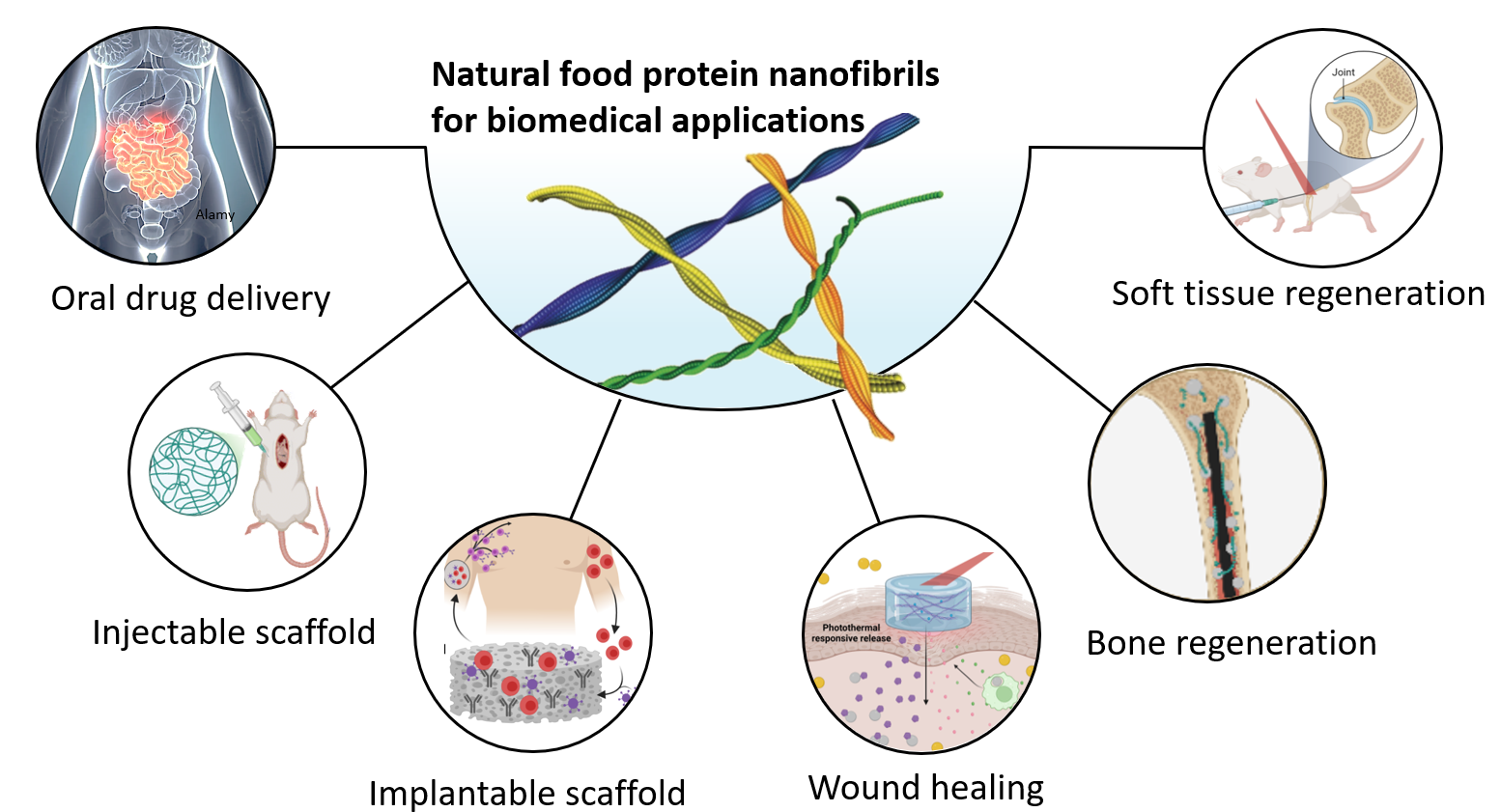
Compatible biomedical materials for human health
Nature-derived nanostructures often showed a high biocompatibility but often limited by low mechanical strength. Protein nanofibrils, with a beta-sheet amyloid core, exhibits a high mechanical strength and a rich surface chemistry allowing the rational design of hydrogels for various biomedical applications.
Natural functional materials
We develop sustainable, protein-based materials for advanced applications such as smart food packaging, biodegradable plastics, water purification, and biosensors. Protein nanofibrils offer high mechanical strength, biocompatibility, and responsive functionalities, making them ideal for environmentally friendly and intelligent material solutions. By leveraging their tunable properties and scalable processing, we aim to create multifunctional systems that reduce environmental impact while promoting human health and safety.
